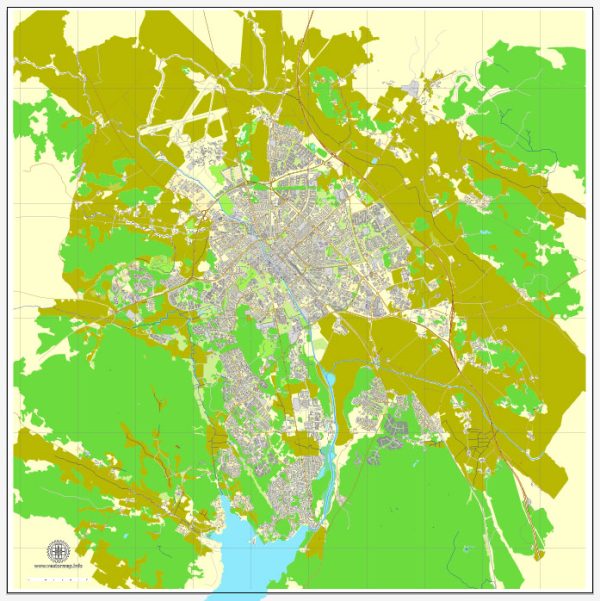Uppsala, one of Sweden’s oldest and most historic cities, has a rich history of urban development dating back over a millennium. Here is an overview of the key stages in the city’s urban development:
1. Early History:
- Viking Age: Uppsala was a prominent settlement during the Viking Age (8th to 11th centuries) and was an important religious and political center. The city’s location near the Fyris River facilitated trade and communication.
2. Medieval Period:
- University Founded: Uppsala University, one of the oldest universities in Scandinavia, was founded in 1477. The university played a crucial role in shaping the city’s intellectual and cultural landscape.
- Cathedral Construction: The Uppsala Cathedral, a significant medieval structure, was constructed during the 13th century. It became a symbol of the city’s religious and architectural heritage.
3. Renaissance and Reformation:
- Growth of the University: Uppsala University flourished during the Renaissance, attracting scholars and contributing to the city’s intellectual vibrancy.
- Impact of the Reformation: The Protestant Reformation in the 16th century had a profound influence on Uppsala, as the city became a center for Lutheran theology and education.
4. 17th to 19th Centuries:
- Expansion and Trade: Uppsala continued to grow, and trade and commerce flourished. The city maintained its importance as a cultural and educational hub.
- Industrialization: The 19th century brought some industrialization to Uppsala, contributing to economic growth. However, the city did not experience the same level of industrial transformation as some other European cities.
5. 20th Century:
- Urban Planning: The 20th century saw increased attention to urban planning and infrastructure development. Efforts were made to preserve the city’s historical character while accommodating modern needs.
- Population Growth: Uppsala experienced population growth, partly driven by the presence of the university and its role as a regional center.
6. Contemporary Period:
- High-Tech Industries: In recent decades, Uppsala has become known for its high-tech industries, particularly in the fields of biotechnology and information technology.
- Cultural and Educational Hub: Uppsala continues to be a cultural and educational hub, with a blend of historical charm and modern amenities. The city’s historic sites, including the cathedral and the university, remain important landmarks.
7. Sustainability and Future Development:
- Uppsala has shown a commitment to sustainability and environmental consciousness in its urban planning. Efforts are made to balance growth with ecological considerations.
Uppsala’s history of urban development reflects its evolution from a medieval center of religion and trade to a modern city with a strong emphasis on education, culture, and innovation. The coexistence of historical architecture with contemporary developments contributes to the city’s unique character.


 Author: Kirill Shrayber, Ph.D.
Author: Kirill Shrayber, Ph.D.